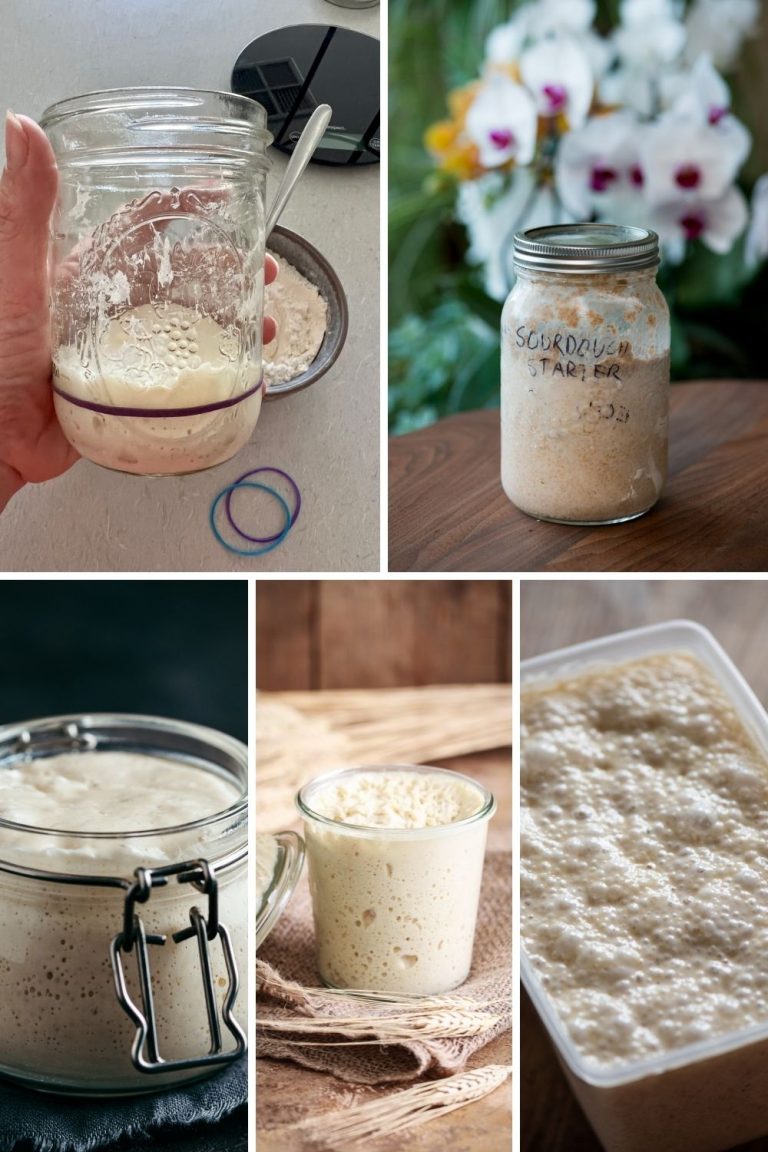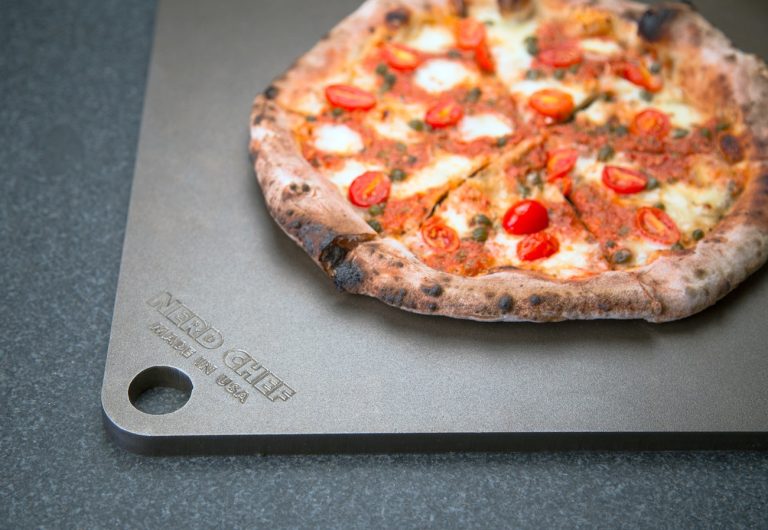How to Create a Sourdough Bakery Branding Strategy That Sells
Sourdough bread sales have jumped 200% since 2020. This market boom is a chance for artisanal bakers to thrive, and strong bakery branding has become crucial. A solid brand helps bakeries compete and draw customers who appreciate authentic, handcrafted bread.
A detailed bakery branding strategy includes several elements that create a strong market presence. Bakeries must develop their unique value, design memorable brand identities, craft engaging stories, create distinctive packaging, build an online presence, and implement local marketing strategies. This piece breaks down each component and provides practical steps that help bakeries build a compelling brand that appeals to bread lovers.
Define Your Sourdough Bakery’s Unique Value Proposition
A distinctive value proposition is significant for sourdough bakeries that want to capture market share in the growing artisanal bread sector. Consumer interest in fermented products remains strong, and bakeries must communicate their unique offerings and benefits effectively to differentiate themselves in the marketplace.
Identify your specialty bread.
Your sourdough bakery needs a signature range of specialty breads that makes it stand out from other bakeries. You can highlight your bakery’s expertise with these distinctive bread options:
- Complex fermented traditional panettone
- Unique grain loaves made with Emmer, Spelt, and Einkorn
- Creative options like pumpkin spice sourdough
- Flavorful loaves mixed with herbs and dried fruits
- Breakfast favorites like sourdough muesli
[Image: Display of various artisanal sourdough bread varieties]
Highlight artisanal techniques
This bakery showcases its steadfast dedication to traditional fermentation methods and craftsmanship. Long fermentation periods create a superior flavor profile and produce the distinctive tangy taste that customers love in authentic sourdough. Bakers must carefully monitor hydration levels at 70% to achieve optimal results and keep the temperature steady at 21°C/70°F during the ideal fermentation process.
[Image: Baker working with traditional sourdough preparation methods]
Emphasize health benefits
Today’s consumers care more about their health, so we need to highlight the many benefits of adequately fermented sourdough:
| Benefit Category | Specific Advantages |
|---|---|
| Digestive Health | Pre-digested grains, more accessible to digest, prebiotic properties |
| Nutritional Value | Better vitamin absorption, more available minerals |
| Gut Health | Beneficial bacteria, better gut microbiome |
| Blood Sugar | Lower glycemic index, better sugar management |
Your bakery should showcase how fermentation naturally breaks down gluten proteins and creates beneficial compounds that help digestion. This feature appeals to health-conscious consumers and people with mild gluten sensitivities.
The long fermentation process creates complex flavors and produces nutrients like folate, potassium, and magnesium that your body can absorb better. Traditional methods naturally improve the food’s nutritional value, making it attractive to health-conscious customers.
[Image: Infographic showing sourdough health benefits]
Create a Memorable Brand Identity
A solid visual identity is the foundation of successful sourdough bakery branding. A well-crafted brand identity connects customers with bakery products at all touchpoints – from packaging to social media presence.
Design a distinctive logo.
Professional logos serve as the lifeblood of bakery branding and act as visual ambassadors for the business. Successful sourdough bakery logos blend these key elements:
- Traditional baking symbols (wheat stalks, rolling pins, or bread loaves)
- Clean, memorable designs that look great in any size
- Elements showcasing the bakery’s specialty or unique story
- Professional typography with clear readability
[Image: Example of professional sourdough bakery logo variations]
Choose brand colors and fonts
A bakery’s personality and values shine through its color selection. Different colors create unique perceptions of your brand:
| Color Choice | Brand Message | Best Used For |
|---|---|---|
| Warm Browns | Traditional, artisanal | Rustic sourdough brands |
| Black & White | Sophisticated, premium | Upscale bakeries |
| Earth Tones | Natural, organic | Health-focused brands |
| Gold Accents | Luxury, premium quality | High-end artisanal |
Your brand’s personality comes alive through typography and font choices. Script fonts evoke an artisanal atmosphere, while serif fonts showcase tradition and reliability. Contemporary sourdough bakeries that target younger audiences benefit from modern sans-serif fonts.
[Image: Color palette and font combinations for bakery branding]
Develop a brand voice
Your bakery’s written communication style should align with its visual identity. A unified brand voice strengthens visual elements through:
- Clear messaging on every platform
- Words that show the brand’s true character
- Writing style that matches visual design
- A tone that strikes a chord with target customers
Brand consistency matters, especially when creating packaging, signage, and marketing materials. Visual elements must work together to leave a lasting professional impression that makes your bakery stand out at farmers’ markets and retail stores.
[Image: Brand consistency examples shown on different materials]
Craft an Engaging Brand Story
Storytelling is at the heart of successful sourdough bakery branding and turns simple bread-making into a compelling narrative that appeals to customers. Studies reveal that more than half of consumers want to know where their food comes from and how it’s prepared, making brand storytelling a key part of bakery marketing.
Share your sourdough trip.
Each sourdough starter tells a unique story. It could be a decades-old family heirloom or a newly fostered culture. Successful bakeries utilize these origin stories to build meaningful connections with their customers. Your story might include:
- First experiences with fermentation
- Lessons learned through trial and error
- Development of recipes and techniques
- Special moments of achievement and discovery
[Image: Baker working with sourdough starter]
Highlight traditional methods
Traditional fermentation methods are the lifeblood of authentic sourdough storytelling. Bakeries should tell their stories through time-honored techniques with these storytelling elements:
| Story Element | Purpose | Impact |
|---|---|---|
| Daily Rituals | Showcase dedication | Builds authenticity |
| Fermentation Process | Educate customers | Demonstrates expertise |
| Hand-Crafting | Emphasize artisanal nature | Creates value perception |
| Time Investment | Highlight quality | Justifies premium pricing |
[Image: Traditional bread-making process demonstration]
Emphasize local ingredients
A bakery’s connection to its community shines through the story of local ingredient sourcing. Local sourcing benefits create a compelling brand story that goes beyond quality:
- Community ties grow stronger by supporting local farmers and producers
- Unique, rotating offerings emerge from seasonal ingredients
- Environmental benefits appeal to conscious consumers
- Brand stories become authentic through direct supplier relationships
Many successful bakeries proudly showcase their connections with local wheat farmers, millers, and seasonal ingredient suppliers. These relationships help customers appreciate the value chain behind each loaf and build an emotional connection to the product.
[Image: Local wheat field or farmer partnership]
Bakeries create more profound brand stories by sharing specific details about their suppliers. Stories about fifth-generation wheat farmers or historic local mills add rich layers to the brand’s identity. This open approach to sourcing builds trust and connects customers to the broader food ecosystem.
“When customers know the story behind their bread, they taste more than just flavors – they experience the passion, tradition, and community woven into every loaf,” reflects the growing sentiment among successful sourdough bakery owners.
[Image: Display of locally sourced ingredients]
Develop Eye-Catching Packaging and Labels
A sourdough bakery’s packaging is its silent brand ambassador that creates lasting first impressions on new customers and strengthens brand identity with each purchase. Innovative packaging and labeling strategies blend practical functionality with visual appeal to deliver a memorable unboxing experience.
Design custom bread bags
Suitable packaging material plays a significant role in preserving product freshness and showcasing your bakery’s brand identity. Professional bakeries can choose from several high-quality options:
| Material Type | Benefits | Best Used For |
|---|---|---|
| Clear Polypropylene | Product visibility, moisture resistance | Retail display |
| Kraft Paper | Eco-friendly, rustic appeal | Direct sales |
| Biodegradable PLA | Environmental sustainability | Premium products |
Your bread bags’ size and style should complement different product types and enhance their visual appeal. Custom-sized bags provide optimal presentation and protection for bread styles of all kinds, from baguettes to boules.
[Image: Various custom bread bag designs with different closure options]
Create informative product labels
Your product labels must strike the right balance between regulations and brand appeal. These elements must appear on your labels:
- Product name and weight
- Ingredient list and allergen information
- Nutritional facts
- Production/expiration dates
- Contact information
- Certifications (organic, non-GMO)
Your label design should use waterproof adhesives and materials like BOPP (biaxially oriented polypropylene) that last longer. Quality labels resist moisture, oil, and temperature changes while looking great.
[Image: Close-up of professionally designed product labels]
Include brand elements on the packaging
Your brand’s consistent presentation on all packaging materials builds more substantial recognition. Here’s what you need to think over for brand integration:
- Logo placement and size optimization
- Brand color scheme application
- Typography consistency
- Visual hierarchy of information
Professional bakeries use special printing techniques to make their brand elements stand out. High-quality process printing creates realistic images, and spot color designs make logos and messages pop.
[Image: Examples of branded packaging elements]
Bakeries can add design features like cellulose windows to make their packages more attractive. These windows show the bread’s quality and create eye-catching visuals that grab customer attention.
Your coating and finish choice shape the overall look substantially. You can pick from:
- Bright gloss to create a premium feel
- High gloss UV to maximize visual appeal
- Matte coating to add elegant sophistication
Bakeries can use green packaging solutions with eco-friendly materials like recyclable paper and cardboard printed with soy-based inks. Health-conscious sourdough lovers appreciate these environmentally friendly options that keep the professional look intact.
[Image: Sustainable packaging options with brand elements]
Build a Strong Online Presence
A solid online presence is the lifeblood of successful sourdough bakery marketing in the digital era. Social media platforms help 61% of consumers find bakeries, which makes digital visibility crucial to accelerate business growth.
Create a user-friendly website.
A bakery website acts as its digital storefront and needs thoughtful design with practical features. The website must include these key elements:
- Design that adapts to mobile devices
- Simple menu layout
- Clear product photos
- Online ordering system
- Location and contact details
- Customer reviews and feedback
[Image: Screenshot of a professional sourdough bakery website homepage]
The website should reflect your brand identity without compromising load time. Professional food photography helps showcase your products and boost sales by capturing customer attention online.
Use social media platforms effectively.
Bakeries can showcase their products and build customer relationships through social media platforms. Each platform serves a specific purpose:
| Platform | Primary Use | Content Type |
|---|---|---|
| Visual storytelling | Product photos, process videos | |
| Community building | Events, announcements | |
| Recipe sharing | Step-by-step guides | |
| TikTok | Behind-the-scenes | Quick tutorials |
[Image: Collection of social media posts showing sourdough products]
A successful social media strategy needs consistent posting schedules and eye-catching visual content. Bakeries can show their expertise by sharing the following:
- Their daily bread-making journey
- Tips to maintain sourdough starters
- Updates about special promotions
- Stories of happy customers
- New seasonal products
Start a sourdough blog.
Your bakery can establish itself as an authority in artisanal bread-making through a consistently updated blog that boosts search engine visibility. Educational content attracts and retains customers who want to learn about sourdough baking. Popular blog topics include:
- Sourdough starter maintenance guides
- Troubleshooting common baking issues
- Seasonal recipe variations
- Ingredient spotlights
- Health benefits of fermented bread
[Image: Blog post featuring sourdough bread-making techniques]
The blog should balance technical expertise and accessibility that cater to novice bakers and experienced enthusiasts. Search engine rankings improve with regular content updates that keep your audience interested and coming back.
Your content strategy should effectively address customer questions and seasonal interests. Bakeries can enhance their search visibility by naturally weaving relevant keywords throughout their blog posts while delivering valuable information to their readers.
[Image: Infographic showing popular blog topics and engagement metrics]
Implement Local Marketing Strategies
Local marketing strategies help sourdough bakeries expand their community presence and build lasting customer relationships. Bakeries that implement targeted local initiatives create connections with their customers and effectively showcase their artisanal products.
Partner with local businesses
Mutually beneficial alliances with complementary businesses create mutual benefits and expand market reach. Successful collaborations typically include:
| Partnership Type | Benefits | Example Activities |
|---|---|---|
| Coffee Shops | Cross-promotion opportunities | Paired tastings |
| Breweries | Expanded customer base | Food pairing events |
| Local Farms | Source quality ingredients | Seasonal promotions |
| Chocolatiers | Product innovation | Special edition items |
These partnerships should align with the bakery’s brand values and target audience priorities. Collaborative events can feature exclusive tastings, seasonal promotions, and joint marketing campaigns that benefit all participating businesses.
[Image: Local business partnership event featuring sourdough and coffee pairings]
Participate in farmers markets.
Farmers markets create perfect opportunities to connect with health-conscious consumers and showcase artisanal sourdough products. Everything in successful market participation includes:
- Professional booth setup with branded elements
- Fresh product samples for tasting
- Informative product displays
- Mobile payment capabilities
- Email signup opportunities
Your market success depends on careful planning and execution. Preparation checklist to help you prepare:
- Early arrival to set up properly
- Attractive product presentation
- Clear pricing displays
- Sufficient inventory management
- Weather protection measures
[Image: Professional farmers market booth setup with branded elements]
Host sourdough workshops
Your bakery can become a trusted expert and create new income streams through educational workshops. A well-planned workshop should cover everything needed to make it successful:
Workshop Structure
- Practical experience with starter maintenance
- Mixing and kneading demonstrations
- Shaping techniques instruction
- Baking method explanations
- Tasting sessions
Your workshop’s success depends on good planning and an excellent experience for participants. Here’s what you need to focus on:
Space Requirements
- Enough workspace for everyone
- Good ventilation
- Room temperature control
- Easy access to equipment
Materials Preparation
- Ingredients measured beforehand
- Printed recipes
- Starter kits for home use
- Learning materials
[Image: Workshop participants learning sourdough techniques]
Your bakery needs solid local SEO strategies to stand out in the neighborhood. You should:
- Claim and update your Google My Business profile
- Ask happy customers for reviews
- Keep your business details up to date
- Create content about your local area
Build stronger community ties through:
- Local event sponsorships
- Food festival participation
- Support for community projects
- Working with nearby schools
[Image: Community event featuring sourdough demonstration]
Make sure these strategies match your bakery’s brand while staying true to who you are in the community. Local marketing works best when it shows your genuine dedication to community values and bread-making traditions.
[Image: Local marketing collateral featuring branded elements]
Conclusion
A successful sourdough bakery brand needs visual appeal, compelling stories, and intelligent marketing. Well-designed packaging, a solid online presence, and genuine brand stories create lasting impressions customers trust and value. These fundamental elements, plus clear messaging about health benefits and traditional baking methods, make artisanal bakeries stand out as premium spots for bread lovers.
[Image: Collection showing branded bakery elements working together]
Effective branding requires attention to detail and steadfast dedication to quality at every customer interaction point. Bakeries can build strong community ties through local markets and baking workshops showcasing expertise. Bakers who want to start their sourdough trip can raise their bread and pizza-making skills with genuine artisanal starters from The Yeast We Can Do. Both home bakers and restaurants can achieve that perfect tangy flavor and signature crust—email john@theyeastwecando.com to enhance your baking with our premium starter.
[Image: Professional baker working with sourdough starter]
FAQs
1. How can I effectively brand my bakery?
To effectively brand your bakery, start with a clear mission and identify your unique selling point (USP). Understand your competitors, define your bakery’s brand voice, and maintain a consistent brand image through visual elements, such as color palette, logo, and overall design.
2. What strategies can I use to promote my bread business?
To promote your bread business, engage customers by allowing them to experience the aroma of your products, offer free samples, and make your storefront inviting. Utilize social media effectively, interact with customers through conversations or surveys, and consider offering online ordering capabilities on your website.
3. What features make a bakery stand out?
A bakery can stand out through exceptional presentation. Use custom-printed labels, stickers, or boxes that visually represent the quality and appeal of your baked goods, enticing customers to try them.
4. How do bakeries attract more customers?
Bakeries can attract more customers by baking during peak hours to maximize the enticing aroma of fresh goods. Additionally, visually appealing decorations on bakery items can enhance their attractiveness, appealing to the customer’s sense of sight and taste.
5. Is starting a sourdough-focused bakery a viable business?
Starting a sourdough-focused bakery can be viable if planned well. Understanding the local market demand, calculating break-even points, and setting realistic sales targets are crucial. Engaging with a business consultant and having a solid business plan can significantly aid this process.
6. What are the essential considerations for opening a bakery in a small town?
When opening a bakery in a small town, consider the availability of suitable equipment and the adaptability of the space for baking needs. It’s important to source quality ingredients and understand the necessary equipment for large-scale baking, such as mixers and fermentation containers. Additionally, consider the technical aspects of baking at s






